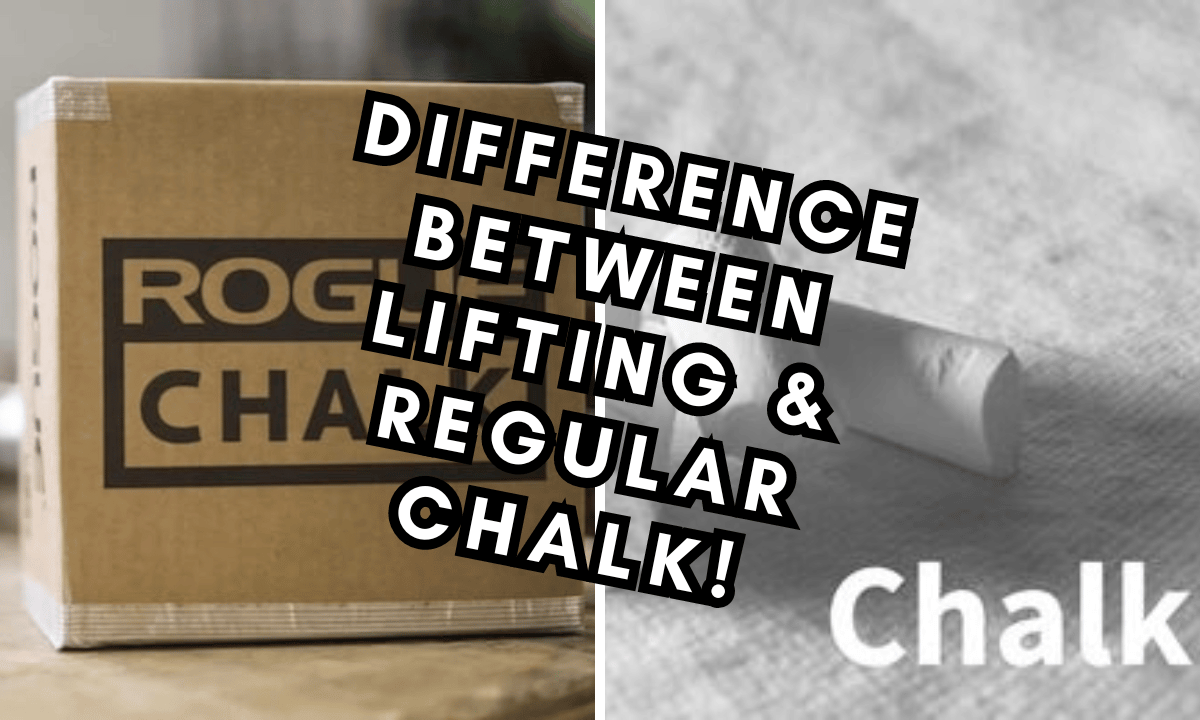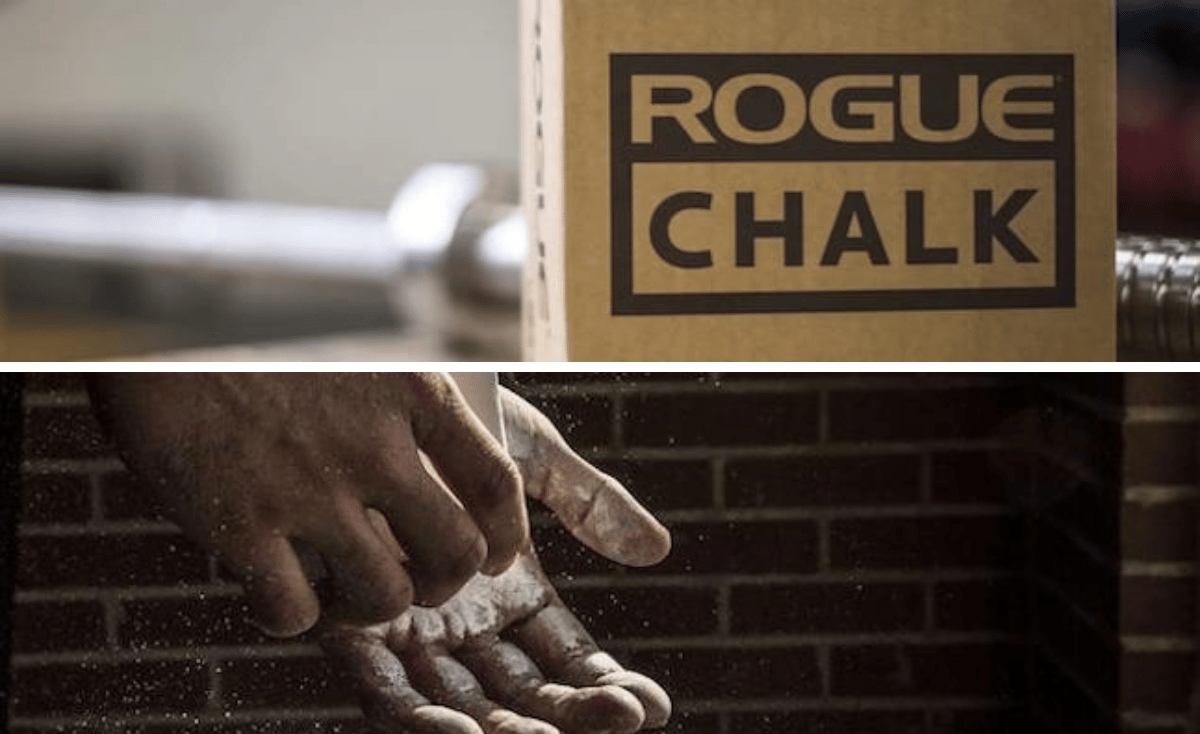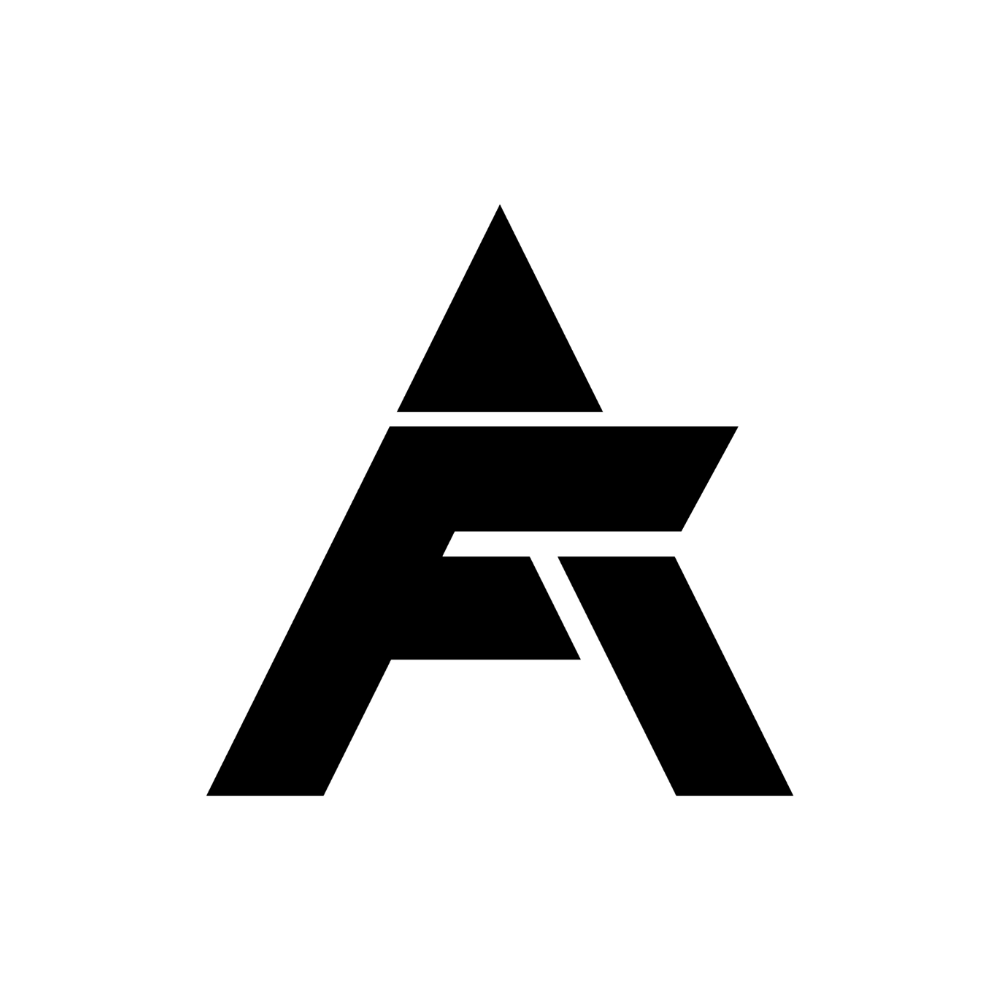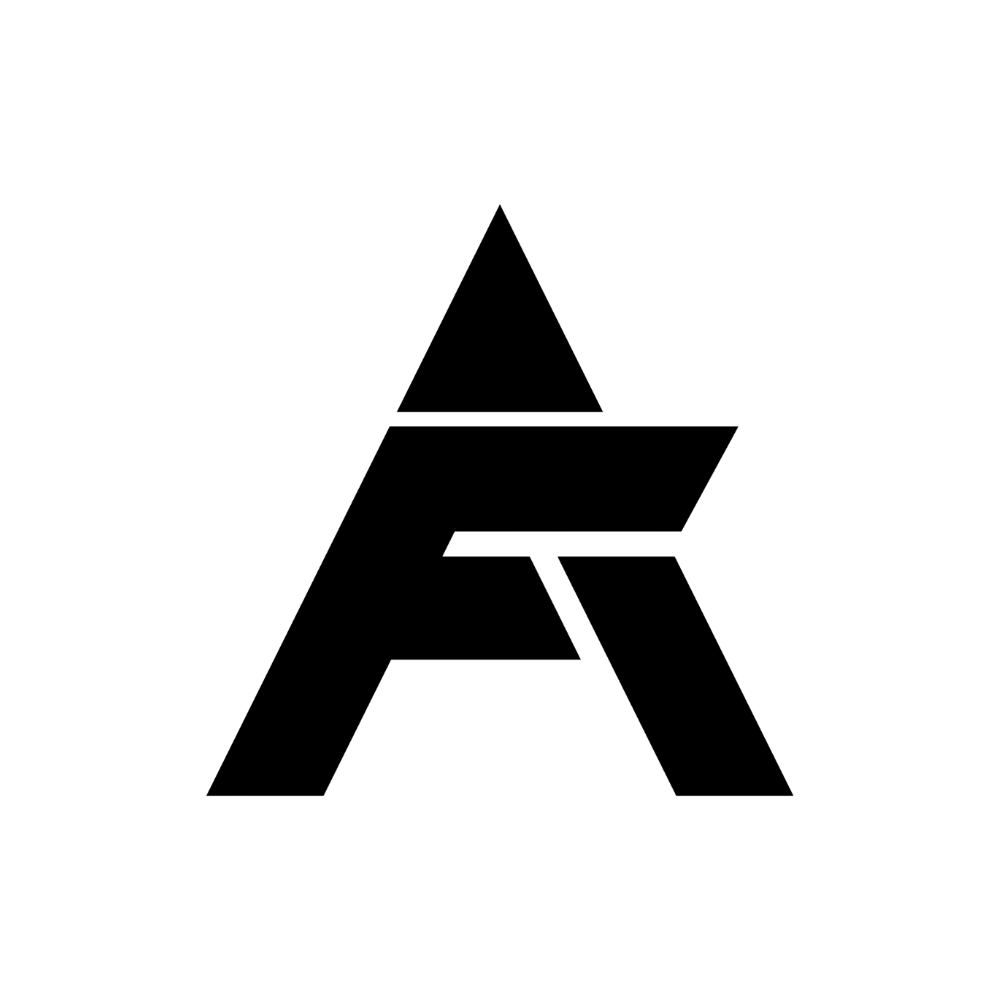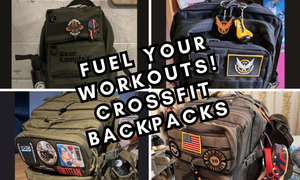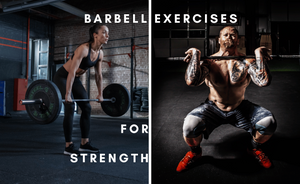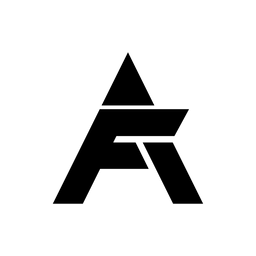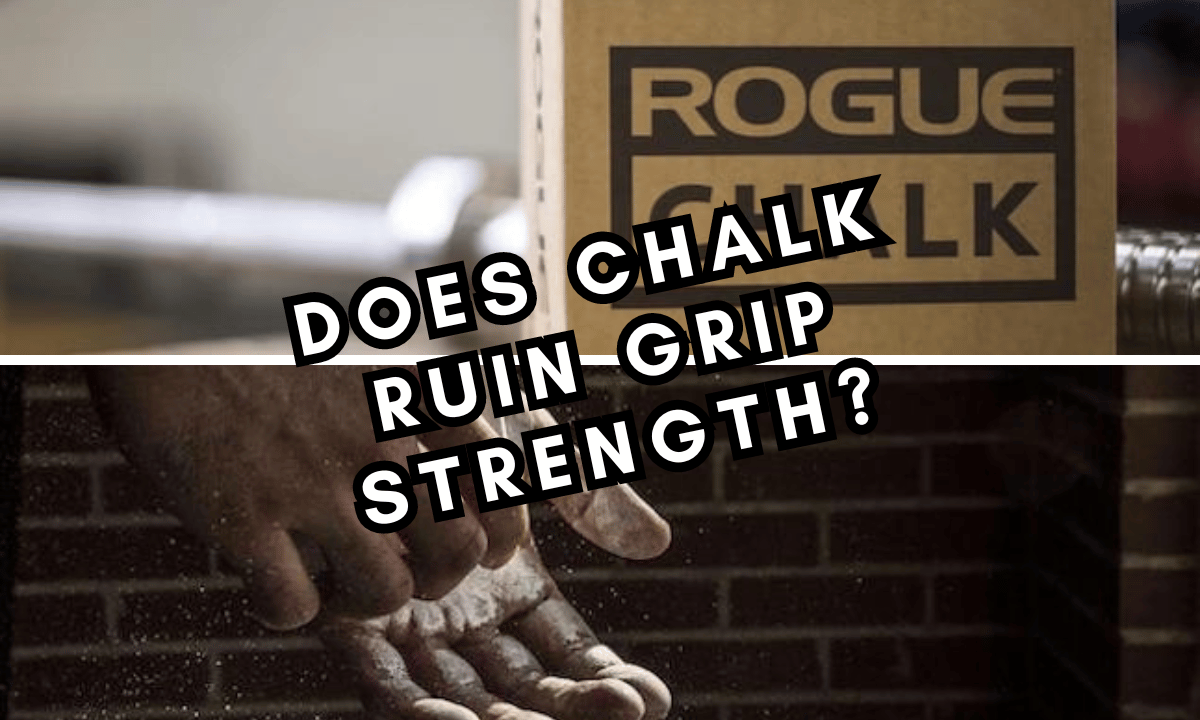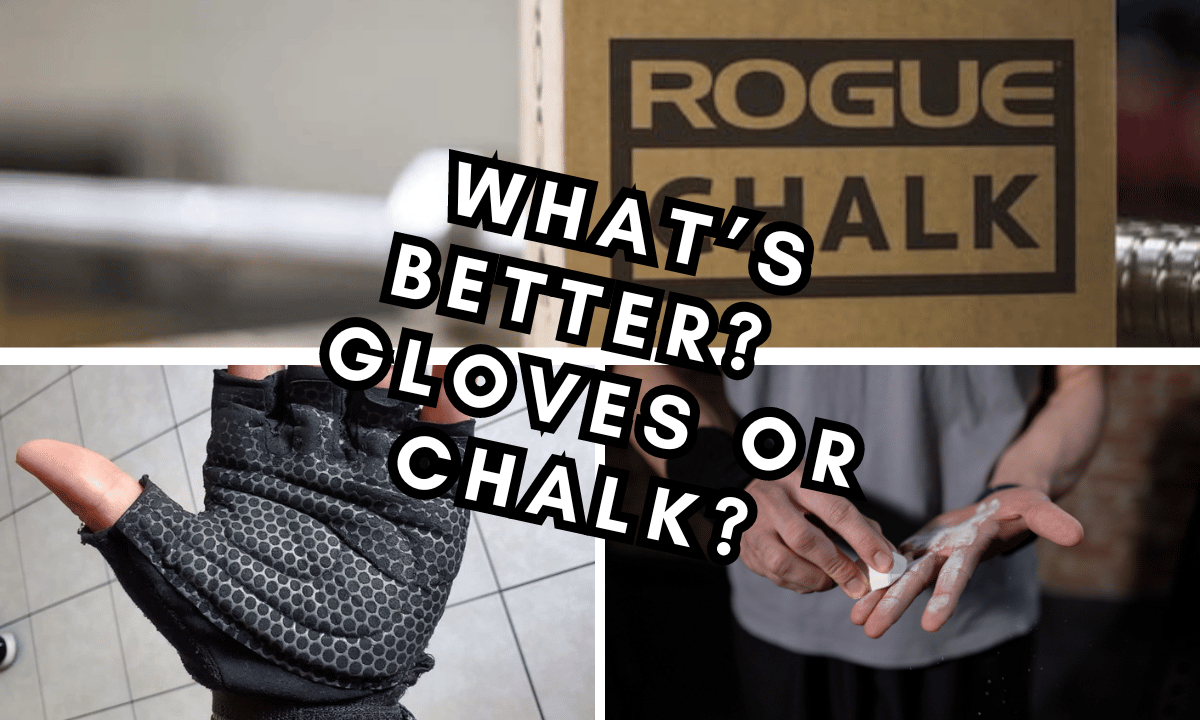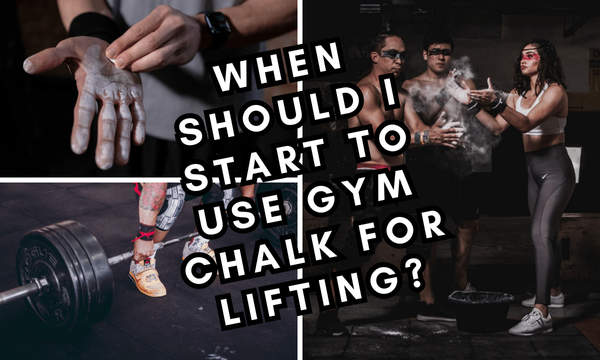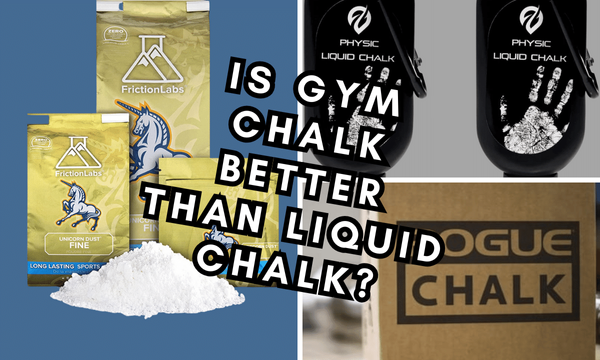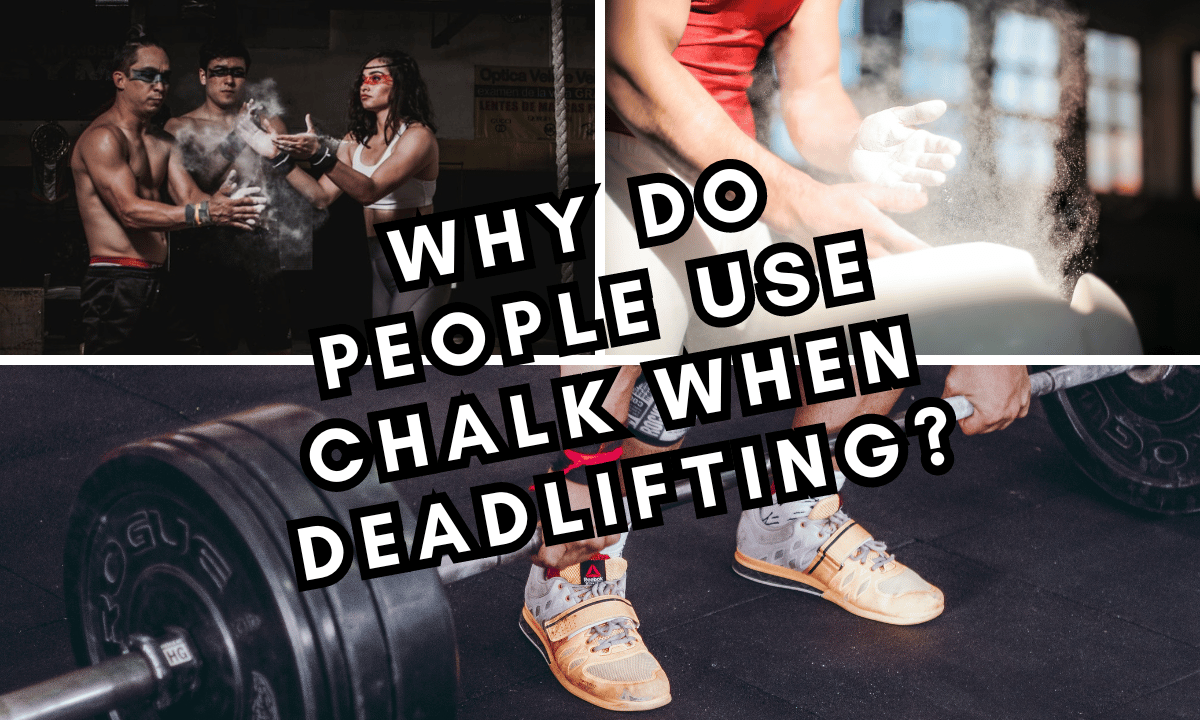In the world of weightlifting, the right lifting chalk can make all the difference. From providing a secure grip to preventing injuries, choosing the best lifting chalk for your needs is crucial. But with so many types to choose from, how do you know what kind of chalk to use for weightlifting?
In this comprehensive guide, we’ll explore the different types of lifting chalk, discuss how to choose the perfect one for your workouts, and recommend the top 5 lifting chalks for weightlifting in 2023. Let’s dive in!
Key Takeaways
- Weightlifters should consider their preferences, gym policies, and needs when selecting the right lifting chalk.
- This article outlines top-rated chalks for weightlifting in 2023 as well as proper application and usage techniques to optimize grip.
- Chalk types such as block, powder, liquid or ball offer unique pros and cons that should be taken into account when making a decision.
Types of Lifting Chalk

When it comes to lifting chalk, there are four main types to consider, including the popular liquid lifting chalk:
- Block chalk
- Powder chalk
- Liquid chalk
- Chalk balls
Each type offers unique pros and cons, hence understanding these differences can help you determine the most suitable lifting chalk for your needs.
Block chalk is a solid form of lifting chalk, favored for its simplicity, secure grip, and cost-effectiveness. Powder chalk, on the other hand, is a loose form that offers a reliable grip but can be quite messy. Liquid chalk provides a mess-free alternative with a secure grip, though it may need more frequent reapplication.
Lastly, chalk balls offer a middle ground between block and powder chalk, minimizing mess while still providing a good grip. We will now examine each type in greater detail.
Block Chalk
Block chalk, also known as weightlifting chalk, is a popular choice among weightlifters, known for its effectiveness, economical nature, and ease of application. Made from magnesium carbonate, block chalk provides a secure and reliable grip during strenuous lifts.
Some notable brands in the block chalk category include Rogue Gym Chalk and SPRI Chalk Block. However, one of the drawbacks of block chalk is its messiness and potential for respiratory irritation.
Applying block chalk involves rubbing a block of chalk on your hands, with emphasis on the areas requiring the most grip. Be sure to remove any excess particles to minimize mess and maximize grip. For those seeking a cleaner alternative, liquid chalk may be the best option.
Powder Chalk
Powder chalk is another form of lifting chalk that offers excellent grip, albeit with a messier application process. Generously applying powder chalk to the palms and fingers is key to securing a firm grip.
Notable powder chalk brands include VIKN Performance Chalk and Primo Loose Chalk, the latter of which combines magnesium carbonate with five essential oils and a natural drying agent.
Despite its excellent grip, powder chalk can be challenging to contain and may result in a messy gym environment due to chalk dust. For those who prefer a cleaner option, liquid chalk or chalk balls might be more suitable alternatives when chalk comes to grip enhancement.
Liquid Chalk
Liquid chalk is a convenient and mess-free alternative to traditional chalk, favored by mainstream gym-goers for its discretion and ease of use. It dries quickly and provides a smooth, even layer of chalk on the hands, making it an appealing option for those who want a less messy solution. Liquid chalk has become a popular choice among athletes.
Three great brands are Spider Chalk Liquid Chalk, Fire Team Fit Liquid Chalk, and SPORTMEDIQ Pro Grade Liquid Chalk, all competing for the title of the best liquid chalk on the market. With the increasing demand for liquid chalks, these brands continue to innovate and improve their products.
Application of liquid chalk involves first ensuring your hands are clean and dry, then spraying a small amount onto your palm. Rub your hands together until a chalky residue forms.
Although liquid chalk offers a cleaner alternative to block and powder chalk, it may not last as long during intense workouts and may require more frequent reapplication.
Chalk Balls
Chalk balls, such as the Primo Chalk Ball and Z-Athletic Chalk Ball, offer a mess-minimizing option for athletes who still want the benefits of a good grip. Encased in a fabric pouch, chalk balls contain loose powder chalk while preventing excessive mess.
These balls provide a thin layer of grip, making them suitable for some athletes but less ideal for barbell movements where a stronger grip is necessary.
Using a chalk ball involves rolling the fabric pouch in your hands for a few seconds, which lets the chalk permeate the fabric and coat your hands. Chalk balls are a popular choice for climbers and gymnasts, as well as weightlifters who prefer a less messy alternative to block and powder chalk.
How to Choose the Right Lifting Chalk
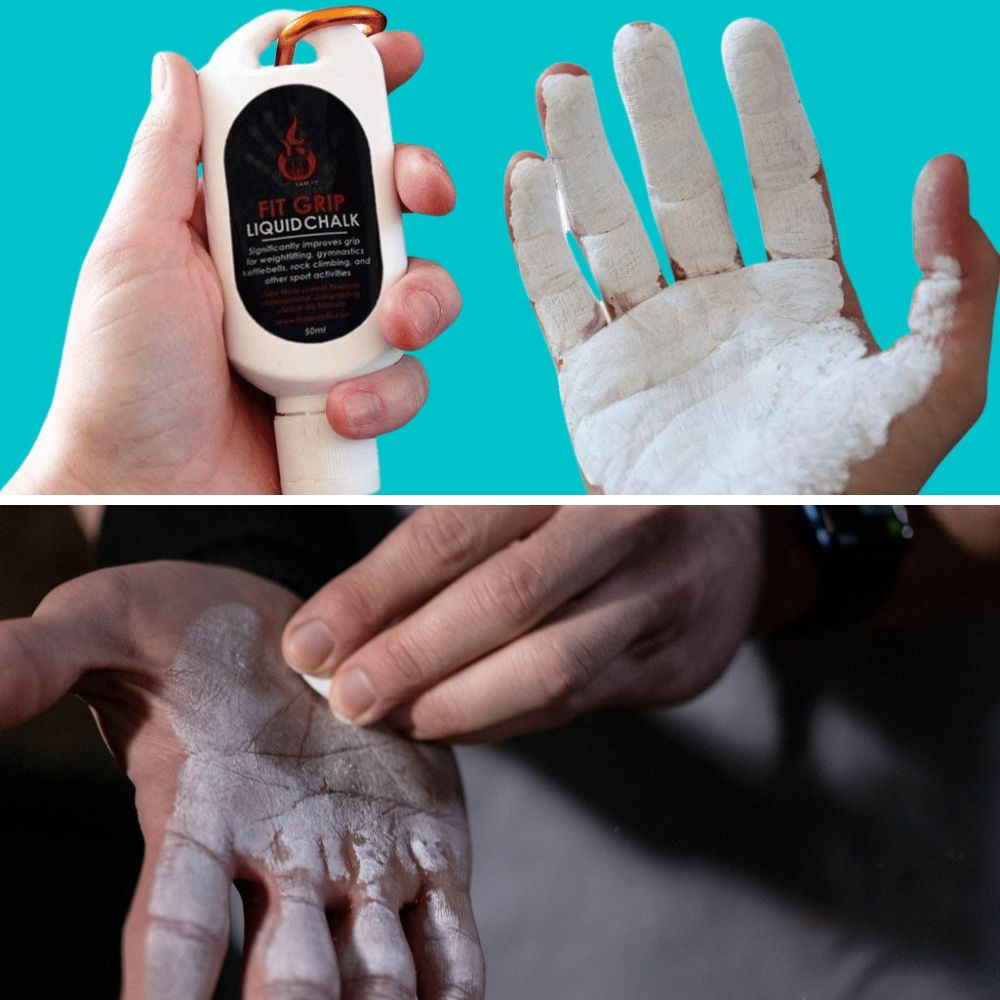
Selecting the best lifting chalk involves taking into account your personal preferences, gym policies, and specific weightlifting needs. Different types of chalk may suit different individuals based on factors such as consistency, convenience, and grip improvement.
Additionally, some gyms may have policies against using chalk, so it’s crucial to be aware of any restrictions and choose a chalk type that complies with the rules. Finally, the type of weightlifting activity you engage in will also influence your choice of lifting chalk. We’ll examine these factors further.
Personal Preferences
Your personal preferences play a significant role in determining the right lifting chalk for you. Consider the consistency you prefer, whether it’s the dry, powdery feel of block chalk or the smoother application of liquid chalk.
Mess tolerance is another factor to keep in mind, as some athletes may prefer the cleaner experience of liquid chalk or chalk balls over the messier block and powder chalk alternatives.
Ease of application is also an important factor to consider when choosing lifting chalk. Some athletes may find it easier to apply block or liquid chalk, while others might prefer the simplicity of using a chalk ball.
Ultimately, the right lifting chalk for you will depend on your personal preferences and the specific needs of your weightlifting routine.
Gym Policies
Paragraph 1: Being aware of your gym’s chalk usage policies is vital when selecting the most suitable lifting chalk for your needs. Many gyms have policies that forbid the use of chalk for reasons including cleanliness and potential harm to equipment.
Some gyms may permit the use of liquid chalk as a substitute, while others may not allow any type of chalk at all. In such cases, gym gloves can be used as an alternative to chalk.
Paragraph 2: Prior to purchasing lifting chalk, it’s advisable to verify with your gym if its use is permitted and ask about any specific usage rules or guidelines. Choosing a lifting chalk that complies with your gym’s policies will help maintain a clean and safe environment for all members.
Weightlifting Needs
Choosing the appropriate lifting chalk tailored to your specific weightlifting regimen is key to optimizing performance and grip. Lifting chalk is beneficial for various exercises, such as deadlifts, pull-ups, and rows, where a strong grip is crucial.
The type of lifting chalk you choose can impact your grip, so it’s essential to select one that best suits your needs and preferences.
Consider the type of weightlifting activities you engage in and which type of chalk would be most suitable for those exercises. For example, if you often perform barbell movements, liquid chalk or block chalk may be a better option than chalk balls, which may not provide as strong of a grip.
Considering your weightlifting needs will guide you towards an informed decision on the most suitable lifting chalk for your workouts.
Top 5 Lifting Chalks for Weightlifting

Having discussed the various types of lifting chalk and factors to consider when choosing the best one, we now present the top 5 lifting chalks for weightlifting in 2023.
These recommendations are based on expert opinions and user reviews, ensuring a selection of high-quality lifting chalk options to suit various preferences and requirements.
Rogue Gym Chalk
Our team has been working together for a long time, ensuring that we deliver the best results for our clients. We pride ourselves on our ability to adapt to new challenges and consistently exceed expectations.
Paragraph 1: Rogue Gym Chalk is a high-quality block chalk that provides excellent grip for weightlifters. Available in bulk for gym owners, this chalk is made from magnesium carbonate and is known for its effectiveness, economical nature, and ease of application.
Rogue Gym Chalk, considered the best overall, is a top choice for those seeking a reliable and secure grip during strenuous lifts, making it a perfect addition to your gym bag.
SPORTMEDIQ Pro Grade Liquid Chalk
SPORTMEDIQ Pro Grade Liquid Chalk:
- Long-lasting and mess-free
- Offers a strong grip for weightlifters
- Easy to apply and dries quickly
- Convenient and discreet option for gym-goers
Primo Chalk Ball
The Primo Chalk Ball:
- Is a refillable chalk ball
- Combines magnesium carbonate chalk with essential oils for improved grip and skin conditioning
- Provides a secure grip for weightlifting
- Conditions hands and prevents skin from tearing
- Is an ideal option for athletes who want a mess-minimizing chalk solution with added skin benefits.
Spider Chalk Liquid Chalk
Split text into paragraphs:
Paragraph 1: Spider Chalk Liquid Chalk is a laboratory-grade liquid chalk that provides long-lasting grip and is less messy than powder chalk. Made from a proprietary blend of laboratory-grade magnesium carbonate and two binding agents, this liquid chalk is an excellent option for those seeking a high-quality, long-lasting grip without the mess.
Bison Chalk Ball
The Bison Chalk Ball is an affordable and practical option for weightlifters and other athletes. Enclosed in a mesh ball for convenient dispensing, this chalk ball provides decent grip and helps prevent spills during use.
Bison Chalk Ball is a suitable option for those seeking an economical chalk solution for their weightlifting needs.
Proper Application and Usage of Lifting Chalk
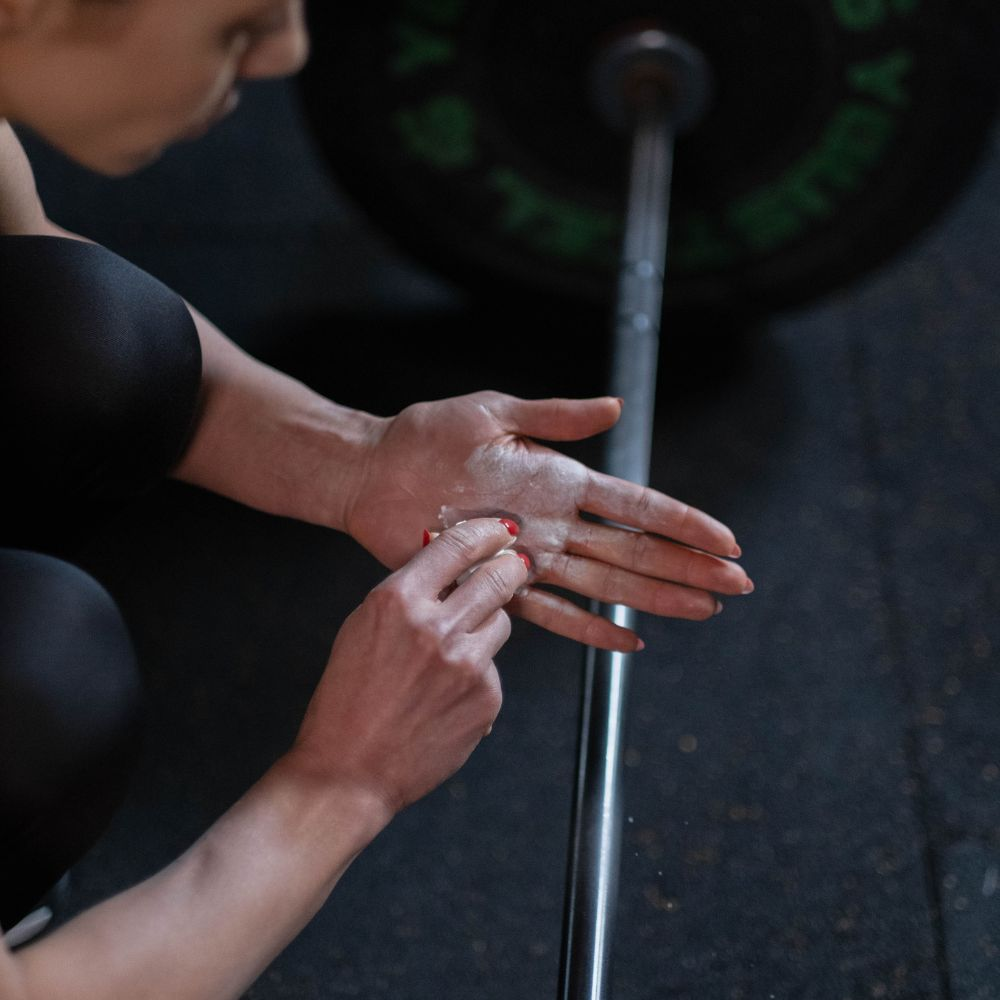
Paragraph 1: Effectively applying and maintaining lifting chalk during workouts is key to achieving an optimal grip and peak performance. Knowing how to apply different types of chalk correctly and when to reapply during your workout can significantly impact your lifting experience.
Paragraph 2: This section will outline the proper technique for applying and maintaining lifting chalk during workouts.
Applying Chalk
For applying block or powder chalk, coat your palms and fingers with the chalk and then rub your hands together for an even distribution. For liquid chalk, ensure your hands are clean and dry before shaking the bottle and applying a small amount to your palm.
Rub your hands together until a chalky residue forms. If using a chalk ball, simply roll the fabric pouch in your hands for a few seconds, allowing the chalk to seep through the fabric and coat your hands.
Applying the correct amount of chalk is necessary to ensure a firm grip without causing unnecessary mess. Start with a small amount and add more as needed to avoid wasting chalk or getting too much on your hands.
Maintaining Chalk During Workouts
Maintenance of your lifting chalk during workouts requires knowing the right time to reapply and methods to prevent excessive mess. Reapply chalk when you notice mostly skin visible through the chalk or when your grip begins to weaken.
Typically, this will be after completing a set or exercise that requires a strong grip, such as pull-ups, deadlifts, or rows.
To prevent excessive mess during your workout, follow these steps:
- Wipe off any excess chalk from your hands and the barbell after each set.
- This will help keep the gym environment clean and reduce the risk of chalk spreading across the gym floor.
- Proper maintenance of your lifting chalk during workouts can contribute to optimal grip, improved performance, and a cleaner, safer gym experience.
Summary
In conclusion, choosing the right lifting chalk is essential for optimizing your grip, enhancing performance, and preventing injuries during weightlifting workouts. By understanding the different types of lifting chalk, considering personal preferences, gym policies, and specific weightlifting requirements, you can make an informed decision on the best lifting chalk for your needs.
With expert recommendations and user reviews at your fingertips, the top 5 lifting chalks for weightlifting in 2023 can help guide you towards a more secure and enjoyable lifting experience. So go ahead, chalk up, and conquer your workouts with confidence!
Frequently Asked Questions
Can I use regular chalk for weightlifting?
Splitting the text into paragraphs: ``` Paragraph 1: Unfortunately, regular chalk will not be effective for weightlifting since it dissolves in water and runs off as soon as you start sweating. It is best to use high-end chalk specifically designed for this purpose.
Is there a difference between lifting chalk and regular chalk?
Liquid chalk and dry chalk differ in their application and effectiveness. Dry chalk tends to last longer on your hands, providing a more consistent grip. On the other hand, liquid chalk is less messy and more convenient but it also dries out quickly. Additionally, lifting chalk is actually magnesium carbonate, while regular chalk is calcium carbonate - they are not the same.
What are the main types of lifting chalk available?
The four main types of lifting chalk are block chalk, powder chalk, liquid chalk and chalk balls. Each type has its own pros and cons.
How do I choose the right lifting chalk for my needs?
Choose lifting chalk that meets your personal preferences, fits gym policies, and meets the needs of your weightlifting goals for the best results.
What are the benefits and drawbacks of block chalk?
Block chalk is cost-effective and provides a secure grip, however it can be messy due to chalk dust and requires frequent reapplication.
